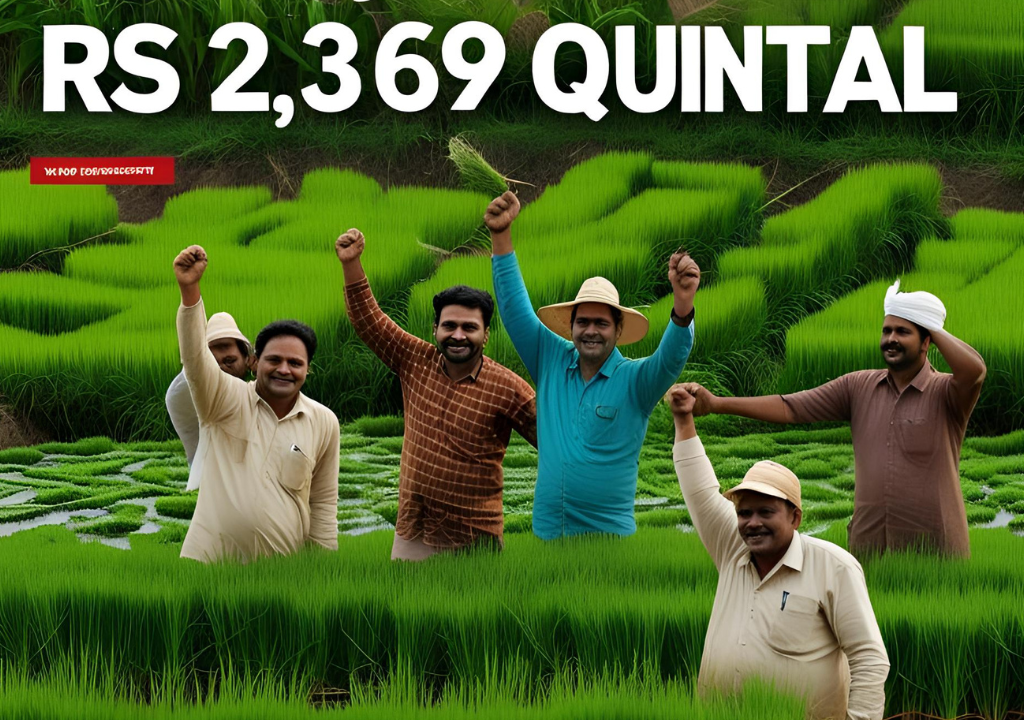The Paddy MSP Hike 2025-26 marks a key policy move to support India’s rice growers. On May 28, 2025, the Cabinet Committee on Economic Affairs (CCEA), chaired by Prime Minister Narendra Modi, approved a 3 percent increase in the Minimum Support Price (MSP) for paddy, lifting it to Rs 2,369 per quintal for the upcoming Kharif season. This decision—boosting the support price for common and A-grade varieties—underscores the government’s commitment to ensuring remunerative returns for farmers amid rising input costs.
What Was the Background?
Since the Union Budget 2018–19, MSP policy has aimed to fix support prices at a minimum of 1.5 times the All-India weighted average cost of production. Despite annual revisions, paddy MSP had seen modest increases: from Rs 2,300 in 2024-25 to Rs 2,369 for 2025-26. However, escalating costs of fertilizer, labor, and fuel had strained farmer margins. Against this backdrop, pressure mounted on the government to announce a substantial MSP raise, leading to the Paddy MSP Hike 2025-26.
Key drivers of MSP policy:
- Cost of Cultivation: Inclusive of seeds, fertilizers, irrigation, and labor.
- Farmer Welfare: Guaranteeing a safety net against market volatility.
- Food Security: Ensuring adequate procurement for the Public Distribution System (PDS).
What Happened Recently?
- MSP Increase: Common paddy MSP rose by Rs 69 to Rs 2,369 per quintal. A-grade varieties saw MSP at Rs 2,389 per quintal.
- Pulses MSP Revision:
- Tur (arhar): Hiked by Rs 450 to Rs 8,000 per quintal.
- Urad: Up by Rs 400 to Rs 7,800 per quintal.
- Moong: Increased by Rs 86 to Rs 8,768 per quintal.
- Other Kharif Crops: The largest absolute MSP hikes were recommended for nigerseed, ragi, cotton, and sesamum—reflecting crop-specific cost pressures.
Information and Broadcasting Minister Ashwini Vaishnaw noted that these revisions aim to protect growers’ incomes and adhere to the MSP formula laid out in Budget 2018–19.
Links Suggested: Bangladesh Political Crisis 2025: Army Chief Warns Yunus
Why Did It Happen?
Rising Input Costs
Between 2024 and 2025, fertilizer and diesel prices climbed sharply, inflating the All-India weighted average cost of paddy production. To maintain at least a 1.5× margin over costs, an MSP surge was unavoidable.
Farmer Welfare Focus
Ahead of state elections in several key rice-growing regions, the government prioritized rural incomes. By approving the Paddy MSP Hike 2025-26, policymakers sought to bolster farm revenues and support consumption demand.
Links Suggested: Rising North East Investors Summit 2025 Highlights New India Growth
Procurement and Stocking Needs
With buffer stocks already below norms, procurement agencies required clearer price signals to secure adequate rice volumes for PDS and export commitments. A higher MSP encourages procurement, reinforcing food security.
What’s Next?
- Procurement Drives: State agencies will kick off procurement at major mandis from July 2025. Farmers are advised to register early to benefit from the new MSP.
- Budgetary Provisions: The Finance Ministry will allocate additional funds in the Mid-Year Review (MYS) to cover increased procurement costs—potentially raising food subsidy outlays.
- Logistics Upgrades: To manage higher procurement volumes, the Food Corporation of India (FCI) plans to add 500,000 tonnes of storage capacity across key grain-surplus states.
Farmers and trade bodies will watch closely how swiftly procurement agencies operationalize the new rates under the Paddy MSP Hike 2025-26.
Looking Ahead
Technology-Driven Efficiency
Successive MSP hikes underscore the need for cost-efficient farming practices. The government may expand Pradhan Mantri Kisan Sampada Yojana subsidies for modern rice mills and promote direct seeding methods to lower labor expenses.
Crop Diversification
While MSP supports rice growers, experts urge diversification into pulses and oilseeds to mitigate risks from paddy-centric cultivation. Enhanced MSPs for tur, urad, and moong in the 2025-26 season signal a gradual shift toward balanced crop portfolios.
Export Potential
With global rice prices firm, India’s bumper output—underpinned by the Paddy MSP Hike 2025-26—could translate into higher exports. The Directorate General of Foreign Trade (DGFT) may adjust export quotas to capitalize on lucrative overseas markets.
Conclusion
The Paddy MSP Hike 2025-26 represents a strategic policy move to ensure farmers receive a fair return amidst rising production costs. By raising MSP for both common and A-grade varieties, alongside significant pulses price increases, the government reaffirms its commitment to rural livelihoods and food security. As procurement agencies gear up for the Kharif season, the success of this MSP revision will hinge on efficient procurement, expanded storage infrastructure, and continuous cost-management support for growers.
For further insights on agricultural policies and market trends, read our analysis of the Union Budget 2025.

